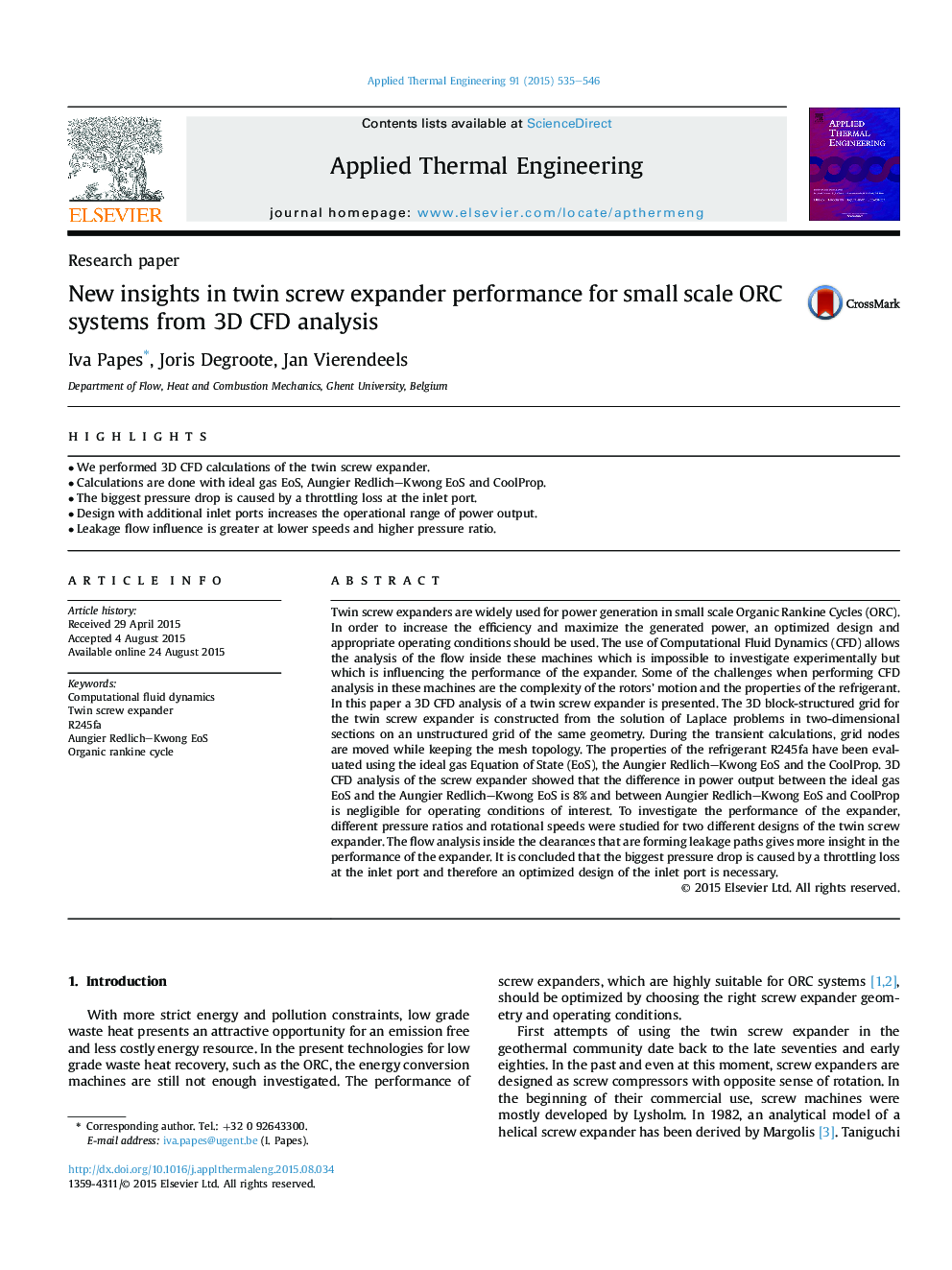| کد مقاله | کد نشریه | سال انتشار | مقاله انگلیسی | نسخه تمام متن |
|---|---|---|---|---|
| 645098 | 1457137 | 2015 | 12 صفحه PDF | دانلود رایگان |

• We performed 3D CFD calculations of the twin screw expander.
• Calculations are done with ideal gas EoS, Aungier Redlich–Kwong EoS and CoolProp.
• The biggest pressure drop is caused by a throttling loss at the inlet port.
• Design with additional inlet ports increases the operational range of power output.
• Leakage flow influence is greater at lower speeds and higher pressure ratio.
Twin screw expanders are widely used for power generation in small scale Organic Rankine Cycles (ORC). In order to increase the efficiency and maximize the generated power, an optimized design and appropriate operating conditions should be used. The use of Computational Fluid Dynamics (CFD) allows the analysis of the flow inside these machines which is impossible to investigate experimentally but which is influencing the performance of the expander. Some of the challenges when performing CFD analysis in these machines are the complexity of the rotors’ motion and the properties of the refrigerant. In this paper a 3D CFD analysis of a twin screw expander is presented. The 3D block-structured grid for the twin screw expander is constructed from the solution of Laplace problems in two-dimensional sections on an unstructured grid of the same geometry. During the transient calculations, grid nodes are moved while keeping the mesh topology. The properties of the refrigerant R245fa have been evaluated using the ideal gas Equation of State (EoS), the Aungier Redlich–Kwong EoS and the CoolProp. 3D CFD analysis of the screw expander showed that the difference in power output between the ideal gas EoS and the Aungier Redlich–Kwong EoS is 8% and between Aungier Redlich–Kwong EoS and CoolProp is negligible for operating conditions of interest. To investigate the performance of the expander, different pressure ratios and rotational speeds were studied for two different designs of the twin screw expander. The flow analysis inside the clearances that are forming leakage paths gives more insight in the performance of the expander. It is concluded that the biggest pressure drop is caused by a throttling loss at the inlet port and therefore an optimized design of the inlet port is necessary.
Journal: Applied Thermal Engineering - Volume 91, 5 December 2015, Pages 535–546